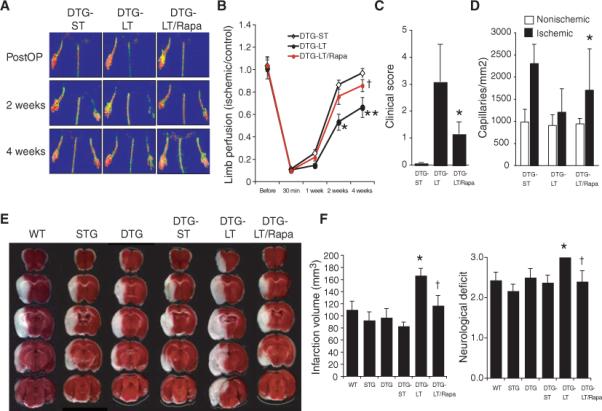Fig. 5.

Reversal of Akt-induced impaired vascular function with rapamycin. (A) Representative laser Doppler blood flow imaging of hindlimb after femoral artery ligation (PostOP) in double transgenic (DTG) Akt mutant mice with no, short-term (ST), and long-term (LT) activation of Akt, with and without rapamycin (Rapa). (B) Blood flow recovery in ischemic limb after hindlimb ligation. Results are expressed as mean ± SD (n = 7 in each group). †P > 0.05 compared to DTG-ST group. *P < 0.05 and **P < 0.01 compared to DTG-ST and DTG-LT + rapamycin groups, respectively. (C and D) Quantification of clinical score and capillary densities after hindlimb ischemia in DTG mice with short-term and long-term activation of Akt, with and without rapamycin (n = 7 in each group). *P < 0.05 compared with DTG-LT group. (E) Photomicrographs of coronal triphenyltetrazolium chloride (TTC)–stained brain sections after transient MCA occlusion (n = 6 to 9 mice in each group). (F) Stroke infarction volumes and neurological deficit scores in wild-type (WT), single transgenic (STG), and double transgenic (DTG) Akt mutant mice with and without short- and long-term induction of myrAkt trans-gene, with and without rapamycin (rapa) treatment (n = 6 to 9 mice per group). *P < 0.01 compared to DTG-ST mice; †P < 0.05 compared to DTG-LT mice.
